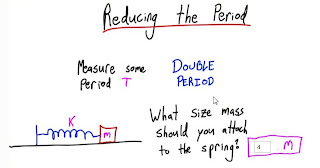for uniform motion (a=0):
for uniformly accelerated motion (
a=constant≠0):
-
v=v0+aΔt,
-
Δs=v0×Δt+12a×Δt2 and
-
v2=v20+2×a×Δs
for the gravitational force (weight - always in the vertical down direction):
for the elastic force (always opposite elastic displacement):
- Felas=−kΔx, k is the elastic constant
for the electric force (attractive for opposite sign charges and repulsive for equal sign charges):
- Fe=keq1q2r2, ke is the electric constant
for the second law of Newton, in the x direction (for example):
for work done by a constant force (careful,
Fparallel may be negative and its the force component in the displacement direction):
for average power:
for instantaneous power
for the conservation of energy:
- Etotalinitial=Etotalfinal
for the kinetic, potential and total energy:
-
K=12mv2
-
Ugravitacional,approximate=mgh
-
Ugravitacional,exact=−Gm.Mr
-
Uelast=12kΔx2
-
Uelectric=keq1q2r1,2+keq1q3r1,3+keq2q3r2,3+...
-
Etotal=K+Ugravitacional+Uelast+Uelectric
for simple harmonic oscilation:
-
a=−ω2x
-
ω=2πT=ΔθΔt
-
pendulum: ω2=km
-
spring-mass: ω2=gl
for the gravitic field created by a mass M, acting on a mass m:
for the elecric field E acting on a charge q:
Fe=q×E















